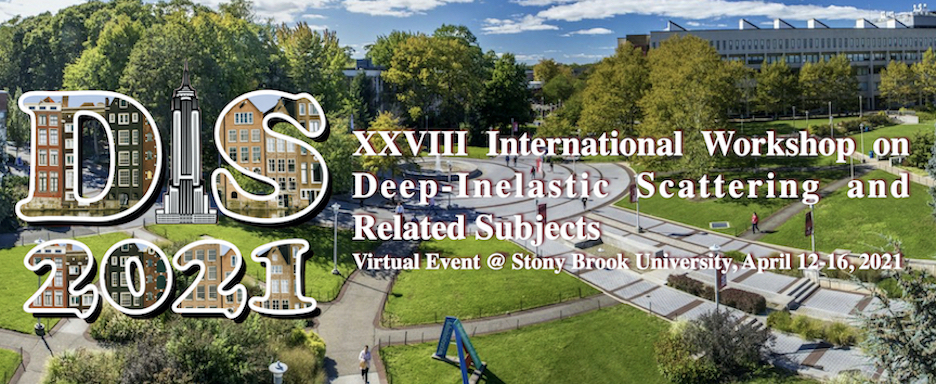Speaker
Description
Exclusive photoproduction of $\rho^0(770)$ mesons is studied using the H1 detector at the $ep$ collider HERA. A sample of about 900000 events is used to measure single- and double-differential cross sections for the reaction $\gamma p\to \pi^{+}\pi^{−}Y$. Reactions where the proton stays intact ($m_Y=m_p$) are statistically separated from those where the proton dissociates to a low-mass hadronic system ($m_p\lt m_Y \lt 10$ GeV). The double-differential cross sections are measured as a function of the invariant mass $m_{\pi\pi}$ of the decay pions and the squared 4-momentum transfer $t$ at the proton vertex. The measurements are presented in various bins of the photon-proton collision energy $W_{\gamma p}$. The phase space restrictions are $0.5\lt m_{\pi\pi}\lt 2.2$ GeV, $|t|\lt1.5$ GeV$^2$, and $20\lt W_{\gamma p}\lt 80$ GeV. Cross section measurements are presented for both elastic and proton-dissociative scattering. The observed cross section dependencies are described by analytic functions. Parametrising the $m_{\pi\pi}$ dependence with resonant and non-resonant contributions added at the amplitude level leads to a measurement of the $\rho^0(770)$ meson mass and width at $m_{\rho}=770.8^{+2.6}_{-2.7}$ (tot.) MeV and $\Gamma_{\rho}=151.3^{+2.7}_{-3.6}$ (tot.) MeV, respectively. The model is used to extract the $\rho^0(770)$ contribution to the $\pi^{+}\pi^{−}$ cross sections and measure it as a function of $t$ and $W_{\gamma p}$. In a Regge asymptotic limit in which one Regge trajectory $\alpha(t)$ dominates, the intercept $\alpha(t=0)=1.0654^{+0.0098}_{−0.0067}$ (tot.) and the slope $\alpha′(t=0)=0.233^{+0.067}_{−0.074}$ (tot.) GeV$^{−2}$ of the $t$ dependence are extracted for the case $m_Y=m_p$.
Eur.Phys.J.C80 (2020), 1189 [arxiv:2005.14471]

